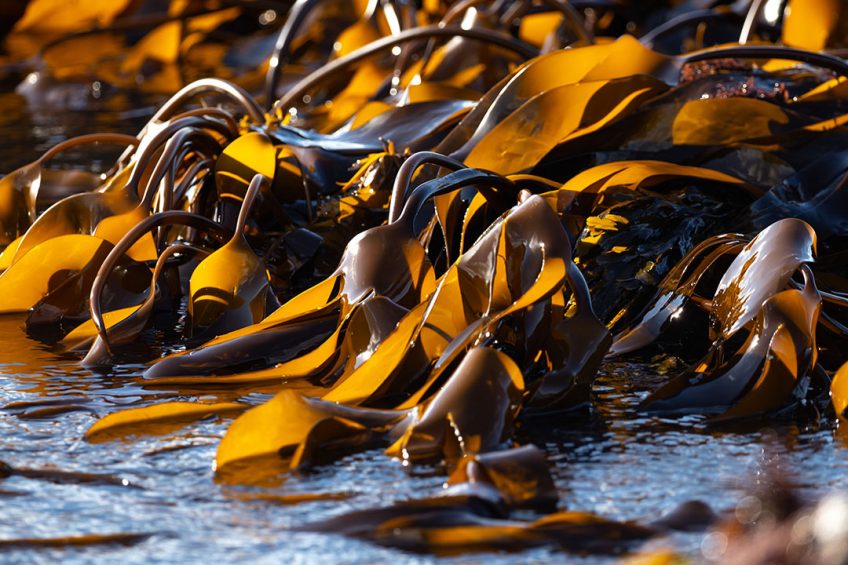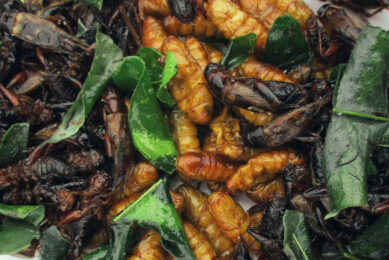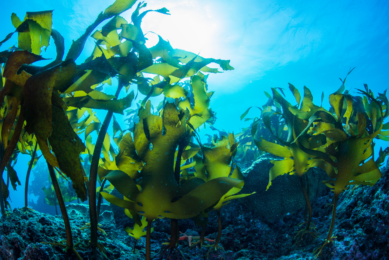Protein value of Norwegian seaweed evaluated for feed

A recent study aimed to evaluate the protein value of 2 seaweeds, namely Saccharina latissima and Palmaria palmata, grown in Norwegian waters, and to characterise its effects on the intestine and other organs. Mink, a well-established model for comparison of nutrient digestibility in monogastric animals, was used.
Seaweeds as nutrient source
Seaweeds have long been used as sources of nutrients, and their potential in the diets of animals is also under investigation. Some seaweed species contain proteins which have well-balanced amino acid composition at levels high enough to make them useful as protein sources for humans and animals.
Until now, the nutritional value of seaweeds has been described and evaluated based only on chemical analyses and some in vitro studies. However, to be useful as an ingredient in diets for monogastric animals, the nutrients must be available in vivo.
Brown and red seaweed from Nordic waters
Among the seaweeds growing in Nordic waters, Saccharina latissima and Palmaria palmata are of interest. 2 quite different species, brown and red, respectively, with very different chemical compositions. Typical for brown seaweed is a high content of alginate. They also contain some cellulose, laminaran, mannitol and fucoidan. In contrast, the main carbohydrates of red algae are xylans. The protein content of brown algae is generally lower than in red – 30-140 g/kg of dry matter in Saccharina latissima, 80-350 g/kg in Palmaria palmata. Additionally, the 2 seaweeds also differ in their mineral content.
The study
The present study, in which adult male mink were used, was conducted to evaluate the potential protein value and reveal possible functional properties of the 2.
2 seaweeds, 5 diets
The study, which was conducted at the Centre of Animal Research of the Norwegian University of Life Sciences in Ås, Norway, sought to evaluate the effects of 2 products from each of the seaweeds – a dried whole biomass and a protein concentrate. The 5 diets were therefore a reference diet based on fish meal, and 1 for each of the 4 seaweed products whereby seaweed supplied 200 g/kg of crude protein. Each diet was fed to 4 male mink for 2 weeks.
Palatability
The study revealed that diets with seaweed were less palatable than the fish meal diet. The animals fed the whole Saccharina diet had a significantly higher water intake and urine production than the other animals, supposedly due to the high ash content of this seaweed product. This diet also stood out regarding urine concentration of iodine, which was 300 times higher than for the fishmeal-based diet.
Protein quality and digestibility
The study shows that products of Saccharina latissima and Palmaria palmata have low protein quality due to low apparent digestibility of most essential amino acids, particularly histidine and methionine. The very low apparent digestibility of cysteine, which in an animal body may be produced from methionine, aggravates the methionine deficiency. The protein concentrated products, overall, showed higher digestibility of the available macronutrients, but only the protein concentrate from Palmaria palmata, could be considered a potential protein source for monogastric animals. It must, however, be used in combination with high-quality protein sources or fortified with amino acids to be useful as a protein source.
In terms of gut function and health, only minor effects were observed. Structure alterations in the kidneys were observed in animals fed the Saccharina products and the whole Palmaria product.
Further investigation required
The researchers of this study recommend that further research of effects on internal organs, in particular, related to the high iodine level, is required before long-term use of the 2 seaweeds.
This study was conducted by Åshild Krogdahl, Alexander Jaramillo-Torres, Øystein Ahlstrøm, Elvis Chikwati, Inga-Marie, Aasen, Trond M.Kortner, and has been published in Science Direct.











